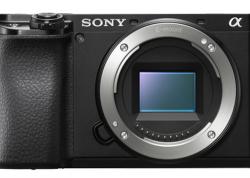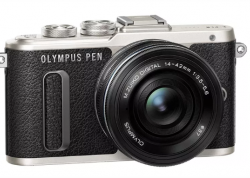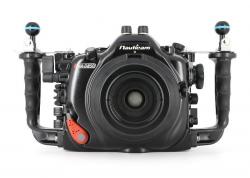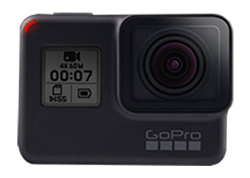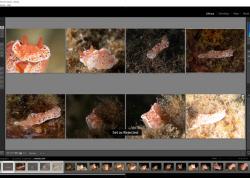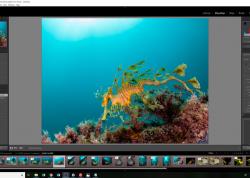Sealife Sea Dragon 2000 Lumen Video Light Review
One thing I have learned from my forays into underwater video is that video lights are essential. Sure, a better underwater video camera will output better video, but it doesn't matter what kind of camera you're using if you don't have good lighting. Without lights, everything looks flat and blue. With lights, colors pop, textures, and depth emerge...it's like seeing the underwater world with a whole new set of eyes.
SeaLife is known for creating straightforward, easy-to-use products. While some of their products are designed for entry-level underwater photographers, they also have more advanced products, like their DC2000 camera and pro-series photo/video lights, designed for beginner-advanced photographers. And their high-powered lights like the Sea Dragon 4500 and 5000 are designed to be used with more big rig style cameras and professional video cameras.
The 2000 lumen Sea Dragon video lights are a perfect example of one of their entry-level products. My partner and I spent a good amount of time using these lights with our GoPro Hero 7 Black. Overall we were very happy with the ergonomics, ease of use, and resulting video quality.

Specs and Key Features
- Anodized aluminum light head with fiber-reinforced polycarbonate body
- Light Source/Bulb Type: 1 x COB LED array (CREE CXA1816 P4 36V)
- 2000 lumen brightness (maintains 2000 lumens throughout burn time at full power)
- One button control for easy operation. Full power (100%), half power (50%), quarter power (25%)
- 5000K color temperature
- Color Rendering Index (CRI) of 80
- Beam Angle: 120° on land / 90° underwater - evenly illuminates the subject with no hot spots
- Lithium Ion battery (included) - 7.4V, 3400 mAh, 25Wh
- Battery Charge Time: 170 minutes
- Run Time : 60 minutes at full power, 120 min at half power or Auto, 240 min at quarter power
- Depth rating of 330 feet/100 meters
- Light Head Dimensions: 5.1" x 2.2" x 4.1" (13cm x 5.6cm x 10.4cm)
- Assembled dimensions (light head, battery, grip, tray): 8.5" x 9.5" x 2.3" (22cm x 24cm x 6cm)
- Weight: 13 ounces (370 grams) light head w/battery installed
- Bulb Life: 35,000 hours
- Dual silicone O-rings (lube included) and waterproof battery compartment – even if the O-ring seal fails, the battery compartment is isolated so water cannot reach the internal electronics
- Buoyancy: Negative
Overall the specs for this light are very solid, hitting the important key features. It has a decent amount of light for video, with a relatively high color rendering index. The wide beam angle provides light coverage across the whole video frame, giving even lighting and avoiding hotspots, even if just using one light. Dual O-rings help prevent flooding, and if flooding does occur, the sealed off battery compartment protects the valuable light head and makes it so you only have to replace the flooded battery. Run times are enough to use this light for 3-4 dives between charges, of course depending on how you use it.

Check out the Sealife Sea Dragon 2000 Video Light on Bluewater Photo!
Gear Used
Our test setup consisted of the following:
- 1x Sealife Dual Tray
- 2x Sealife Handles
- 2x Sealife Flex Arms
- 2x Sealife Sea Dragon 2000 Lumen Video Lights
- 1x GoPro HERO7 Black
- 1x GoPro FLIP6 Pro kit with Macromate Mini

Build Quality, Reliability & Ergonomics
The SeaLife tray, handles, arms and lights are well-built and robust. The flex arms and handles are very thick, meaning that the setup is a bit larger than some of the other ones out there, but also very easy to use. You can tell it's built to take some punishment and keep on going. The pieces are easily assembled and disassembled using the Sealife connection mechanisms, and the package was quite nice to use underwater. Overall it was a nice apparatus, with the only downside being that it is a bit bulkier than the other options out there for an action camera tray setup.
We used these lights on about 20 dives and had no glitches or reliability issues of any type. They are very easy to use with their single push button control system, and as long as we kept the batteries charged they worked very well. We took the setup on some fairly rough dives in Komodo and had absolutely no concerns about strength or durability.
Video Performance
Beam Angle and Evenness of Lighting
The first thing I tested with these lights was the beam angle and consistency of lighting. I took them out for a night dive so I could easily see exactly where the light was falling, and if it was creating any hotspots on the video.
The main things I observed are:
- The wide beam angle means 1 light is enough to light up the full wide field of view of a GoPro
- Lighting is warm and even, with no hotspots observed
- Using two lights makes for brighter lighting, providing sharper detail
- Using two lights allows for the lights to be positioned further away from the GoPro lens, resulting in significantly less backscatter/particulate being lit up.
What this means is that one light will work well for use with an action camera like a GoPro, but two lights are better and will give noticeably higher quality video.
Lights Compared to Red Filter or Ambient Light
We did some tests to compare video taken with the 2000 lumen lights with video taken using only a red filter, or just with ambient light.
In situations with lower levels of ambient light, the Sea Dragon lights resulted in a huge improvement in video quality, which much nicer colors and details. In situations with bright ambient light, the Sea Dragon lights still provided a noticeable improvement in color and details, though not as much as with lower levels of ambient light.
Overall Video Performance
My partner Lisa took some nice footage in Indonesia (Tulamben and Komodo) using the GoPro HERO7 Black and two Sealife Sea Dragon 2000 lights. With any video lights, it is hard to notice much effect more than a few feet away, unless shooting at night, or in very dark conditions.
When it comes to video lights, more light tends to mean better video, with brighter colors and more texture. So as these lights are at the lower end of the video light spectrum, with 2000 lumens of power (compared to video lights which can have 10,000 lumens or more), they do have their limitations. However, when using an action camera like a GoPro, where exposure cannot be adjusted during the dive, higher powered lights might lead to overexposure of subjects.
If you are planning on being a serious, professional videographer though, you may want to look at higher powered lights, like the SeaLife Sea Dragon 5000F, Keldan 4x 9000 lumen video light, or the Light & Motion Sola Video Pro 9600 lumen light. But of course, with that kind of power comes much larger cost, size, and weight, among other considerations.
The way to get the most out of these lights is to get close to your subject. For wide angle, this means 1-2 feet away, while for macro video it's in the range of a few inches. At these distances, these lights really made the colors pop, making the underwater video look nice and professional. And when getting in to macro range, they looked even better, rendering nice warm colors and lots of detail on the subjects. I compiled some of the best clips Lisa took with this setup into a short video, which really shows how nice these lights can make your underwater video look. No post-processing of any type was used, other than some cropping of the macro shots from 2.7K down to HD (1920x1080) resolution.
Photo Performance
As this light can also be used for photos, I took some test shots with the GoPro HERO7 Black while in Komodo. For serious photographers, strobes provide much better photos than video lights. However, for someone just looking to add a bit of color to their shots, video lights can do a nice job.

The photo taken with the video lights stands out as being sharper and more colorful, while the shots with ambient light and the red filter both have dark patches in shadow, and look more drab/less colorful. The red filter gives better colors than shooting in only ambient light, but it does not help with the dark areas - instead, it seems to make them worse.
These photos were taken in relatively shallow water, with good visibility and sunlight. For photos taken with less ambient light, the advantage of the video lights is much more pronounced.

Here the advantages of using video lights for photos are very pronounced. These images were extracted from video taken in an area that was in the shade, and so had less ambient light.
Both of these sets of images were taken in very close proximity to the subjects - between 1-3 feet away. Any further away and the effect of the video lights becames a lot less noticeable.
The bottom line for photography is - if you are only doing photography, strobes are best. If you are planning on doing both, consider hybrid lights which work for video but also have a strobe function, like the Symbiosis SS3 strobe and video lights. If you are mainly taking video, but want to take some photos here and there, then video lights will work fine; just make sure you get very close to your foreground subject.
Conclusion
The Sealife Sea Dragon 2000 lumen video light is a great entry level light. The wide beam angle means that one light purchased with the tray and grip or flex arm (see above link) is all that is needed to up your video game with an action camera like a GoPro. For wide angle video shot with the foreground subjects no more than 3 ft away, or taken at depth or in other conditions with low levels of ambient light, this light will make your video pop. For macro video, this light brings warmth and color that will give your video a professional feel.
Adding a second light will improve your ability for creative lighting, increase the sharpness and color of your video, and also provide significantly less backscatter than one light. A setup with two lights as was used here, with a GoPro HERO7 Black or other action camera, is all that is needed to make high quality underwater video, provided you shoot in a way that uses these lights to their best advantage. From our experience, if taken care of properly these lights should last quite a long time.
The bottom line is, recreational videographers will be able to get a lot of mileage out of these lights, and they should be a strong consideration for anyone's first video light purchase.
For more serious videographers, 2000 lumens may be too limiting, and larger lights in the 4000-10000 lumen or higher range should be considered. For larger lights in the SeaLife product line, check out the Sea Dragon 4500 video light and the Sea Dragon 5000F light.
For photography enthusiasts, who want to do more photography than video, strobes are the best choice. The second-best choice is strong video lights (5000-10,000 lumens +) or a hybrid strobe/light combination, such as the iDiveSite SS3 Symbiosis, or the Kraken Sports Hydra 5000S+. Alternately, you can pair one 2000 lumen light with a SeaLife flash, as in the SeaLife 2000 Duo Package.
Whatever option you choose, adding more light to your underwater videos and photos is pretty much guaranteed to be a good investment. As always, if you have any questions, feel free to drop me a line at bryan@uwphotographyguide.com.
If you found this review useful and want to support the Underwater Photography Guide, then please drop by our sister companies Bluewater Photo and Bluewater Travel!

Check out the Sealife Sea Dragon 2000 Video Light on Bluewater Photo!

For some amazing diving in Indonesia, we would highly recommend the places we stayed while testing out this gear: Villa Markisa dive resort in Tulamben (amazing muck diving, USS Liberty wreck, and excellent wide angle), and Dragon Dive Komodo in Komodo (amazing mantas, reefs, turtles and other wide angle, as well as great macro). Check out the links for more information.
Additional Reading
RECOMMENDED ARTICLES
SUPPORT THE UNDERWATER PHOTOGRAPHY GUIDE:
The Best Service & Prices on u/w Photo Gear
 Visit Bluewater Photo & Video for all your underwater photography and video gear. Click, or call the team at (310) 633-5052 for expert advice!
Visit Bluewater Photo & Video for all your underwater photography and video gear. Click, or call the team at (310) 633-5052 for expert advice!
The Best Pricing, Service & Expert Advice to Book your Dive Trips
 Bluewater Travel is your full-service scuba travel agency. Let our expert advisers plan and book your next dive vacation. Run by divers, for divers.
Bluewater Travel is your full-service scuba travel agency. Let our expert advisers plan and book your next dive vacation. Run by divers, for divers.




